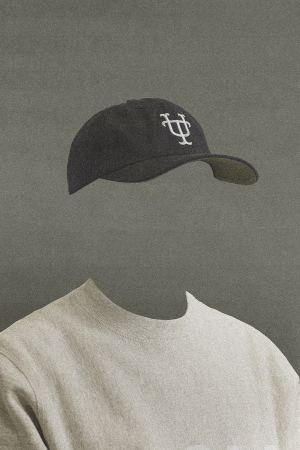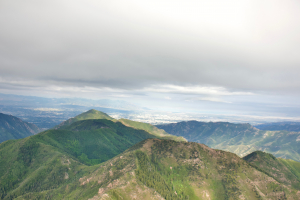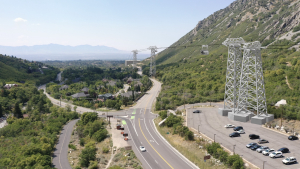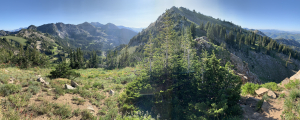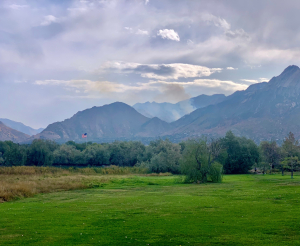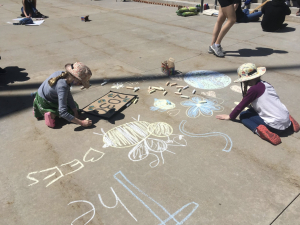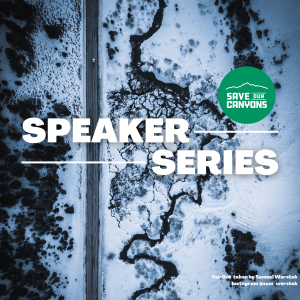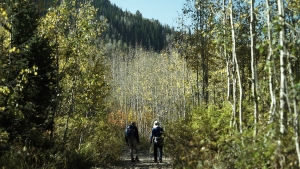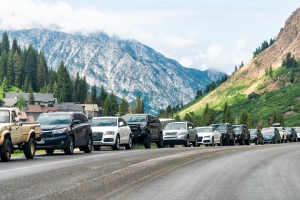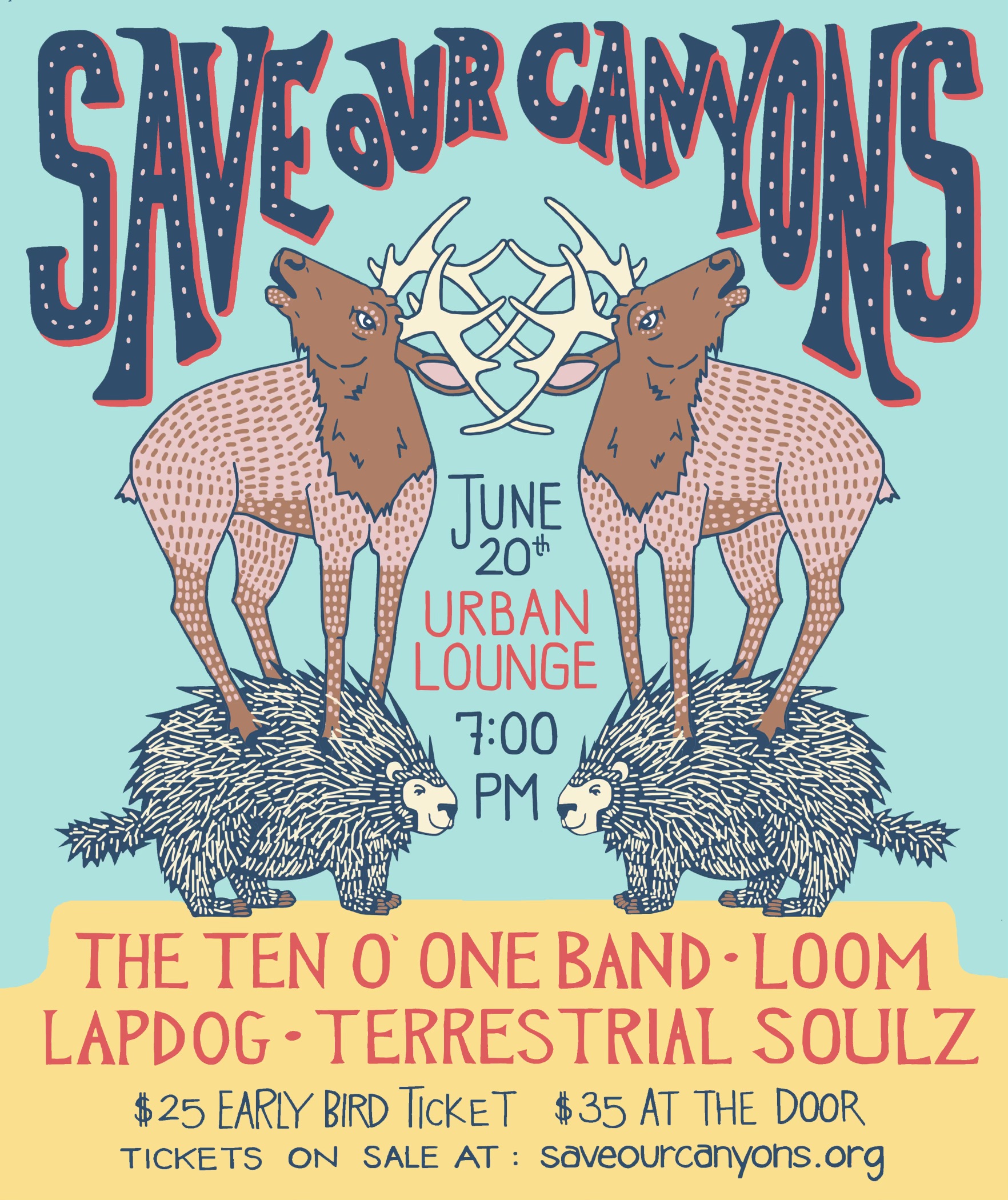Grace Tyler
Skiing & Mountain Living Through Art, Design, And Architecture—without Sacrificing On Environmental Concerns
A key component of 77mm’s core mission is to provide greater access to the world of skiing & mountain living through art, design, and architecture—without sacrificing on environmental concerns.
77mm takes its name from the tail width of the first Howard Head aluminum standard ski. In 1947, Howard Head, a self-educated structural engineer working in airplane manufacturing, was convinced there was a way to make a lighter ski using the material and structural analysis from airplane construction. He quit his job and put all resources into creating a makeshift workshop. After 40 iterations, he birthed the first successful non-wood ski in history. In 1949, he produced 50 pairs, in 1950, he produced 300, and by 1953, he had produced and sold over 4000 pairs of reformed skis. By the end of the decade, Head became the largest ski manufacturer in the country.
My fascination with this story is rooted in the unintended cultural and architectural impact of Head’s product innovation. The significant improvement in ski functionality created a cultural reset: more people interested in skiing, improved capabilities for current skiers, and a greater demand for ski resorts and ski-related products. This catalyst resulted in new events and competitions, further product innovation in apparel, and innovation in cinematography/digital media—the birth of a completely new culture.
It’s with the fascination of the causal relationship between physical product and development that 77mm explores the physical manifestations of culture derived from skiing and mountain living. My driving thesis is that the reshaping of physical products inevitably changes culture, manifested through perceptions, actions, language, art, design, music, film, education, transportation, and architecture.
Simply put, if we can reinterpret ski culture through product innovation, we can influence the architectural development and overall perception of mountain living. Thanks to organizations like Save Our Canyons we can ensure that any progress in development considers the environment as a serious, paramount concern. For this reason, we’ve decided to donate a portion of proceeds from all ‘UTAH’ products moving forward—starting with our signature ‘UTAH’ Cap.
Parley's Canyon Resources
The proposed mining operation for Parley's Canyon will have a dramatic effect on the entire Wasatch Range. The size and scope of the project presents this as the largest mining operation within the Wasatch Front since the establishment of the Point of the Mountain quarry.
Stopping a mining operation in Parley's Canyon includes conversations across many different platforms, organizations, county officials, state legislators, and federal agencies. All of these moving parts created a demand for a resource page to best inform and prepare you to be involved and find your voice as an advocate for the Wasatch. This page will continually update as this process continues to evolve.
Acronym’s Defined:
DNR - Department of Natural Resources
DOGM - Division of Oil, Mining, and Gas
SMO - Small Mining Operation
LMO - Large Mining Operation
NOI - Notice of Intent
EPA - Environmental Protection Agency
NEPA - National Environmental Policy Act
FCOZ - Foothills and Canyons Overlay Zones
FR - Forestry and Recreation Zone
SLCo - Salt Lake County
Additional ways to act now:
- Stay updated and involved by visiting www.saveparleys.org.
- Sign up for our Action Alerts to remain informed.
- Voice your concerns and ask questions by contacting elected officials.
Read the revisions of Salt Lake County Ordinances on 12/10/2021 below:
![]() Meeting Minutes from Salt Lake County on 12/10
Meeting Minutes from Salt Lake County on 12/10
- SOC supports the following revision of Salt Lake County Ordinances:
- It prohibits the uses of “mineral extraction and processing; mine; quarry; gravel pit; including crushers or concrete batching plants used in connection with and as part of an operation for the removal of sand, gravel and/or rock aggregate in the Forest Recreation Zone and in the Foothills and Canyons Overlay Zone.
- It establishes a process for the County planning director to decide whether or not a use not listed is prohibited or related to a conditional or permitted use in the relevant ordinances.
Utah Department of Transportation (UDOT) Little Cottonwood Canyon (LCC) Final Environmental Impact Study (FEIS) Update!
On August 30th, UDOT announced the gondola as their preferred alternative for Little Cottonwood Canyon, but with a phased approach first. While we are disappointed they are still considering the gondola after 14,000+ public comments were submitted – we see the bigger picture in their announcement: we have time to prevent the gondola.
Utah Department of Transportation (UDOT) Little Cottonwood Canyon (LCC) Draft Environmental Impact Study (DEIS) Update!
We would like to start off by saying THANK YOU to anyone that signed the petition to Gov. Cox and UDOT asking to extend the comment period on the UDOT DEIS, submitted a comment to UDOT, and contacted their local elected officials.
Did you miss our Wildfire Panel Discussion on June 23rd? Tune into today to learn about about our forests and wildfires, how you can get involved, and what you can do this summer to reduce wildfires!
Earth Day in Salt Lake City
Written by: Berkeley Loper, Community Development Intern
No more coal, no more oil! Keep that carbon in the soil!
Show me what democracy looks like! This is what democracy looks like!
When the land we love is under attack, what do we do? Stand up, fight back!
Echos of chanting can be heard across the south steps of the capitol on the sunny afternoon of April 22, 2021. The passion in voices young and old is contagious. The snow-capped peaks of the Central Wasatch can be seen in the distance, a reminder of the wild lands we love and hope to protect for future generations.
Earth Day 2021, in Salt Lake City was one to remember. Students from the University of Utah along with middle and high schools around Salt Lake City came together with environmental organizations from the community to celebrate our planet and raise awareness about some climate issues facing Utah.
I was lucky enough to represent Save Our Canyons at two different events:
Divest U; Held a rally on campus urging the University of Utah to divest from Fossil Fuel development.
Fridays For Future; A climate advocacy organization led by high school students. Organized a gathering at the Utah State Capitol calling for more legislative action against the climate crises.
From young children drawing with chalk and joining in the chanting, to older activists who have spent lifetimes fighting for acknowledgement and action against the climate crisis — it seemed that everyone had come out to support the efforts of student organizers.
Divest U, a student group at the University of Utah, has been working tirelessly for months to build support from the campus community for fossil fuel divestment. Currently, the University invests a portion of their $1.1 billion endowment in corporations participating in or funding fossil fuel development. The intent behind Divest U’s gathering on campus this Earth Day was to raise awareness about where the University’s endowment is being invested, and to inspire students to take charge of how money within their institution of education is being spent. The group’s hard work paid off, and the University of Utah’s academic senate voted to divest the endowment from fossil fuel development and reinvest in sustainable industries the following Monday.
While promoting Save Our Canyons’ message on campus and at the capitol, I had the privilege of chatting with some folks about the importance of protecting the Wasatch, as well as hearing stories from community members about what the Wasatch means to them.
CLICK HERE to watch what other people in the community have to say about protecting the Wasatch!
I listened to the stories of college students who spend their free time biking, skiing, climbing, hiking, trail running, and frolicking in the beautiful mountain range that frames the valley. I spoke with a mother who wants to protect the Wasatch so her children and her children’s children can enjoy the same solitude and adventure that can be found there today. I talked with residents who value clean drinking water, and believe that protecting the watershed should be the top priority when considering land management strategies in the Wasatch. I heard from people who don’t get out recreating as much as they would like, but still feel refreshed and rejuvenated every morning when they wake up and see the mighty Wasatch Front looming over their homes in the valley.
I was inspired by the sheer force of young people coming together to make change in their communities this Earth Day. Time and time again, youth have shown up to take charge in the fight against the climate crisis and acknowledging that there is no future unless action is taken right now. We can all learn from the passion, creativity, and humility of young organizers and carry their energy with us in future activism pursuits, whether in small daily actions or larger protests and rallies.
UDOT GRAMA Request — State Records Committee Win
Save Our Canyons has been trying to obtain public information since Nov. 2020 on the Little Cottonwood EIS from the Utah Dept. of Transportation (UDOT). Access to public records during an EIS is critical as they provide better understanding and aid the public in meaningful participation in the NEPA process. UDOT failed to give any response to numerous outreach attempts, so we elevated our appeal to the State Records Committee. Not having access to this information has significantly harmed SOC’s, our members, and our partners’ engagement in the NEPA process. It is important to note that hiding information from the public is a gross violation of the NEPA process.
This past Thursday, the Records Committee heard our case and unanimously voted to review the records and what SOC deems to be an unlawful protection of public documents relevant to the EIS. This is a small, but significant victory for our community and for the Wasatch, as this process will ensure UDOT can no longer hide information about their EIS from the public and fully respond to SOC’s request for information. While this process continues, SOC is trying to work with UDOT and its legal counsel to uncover communications and details about the intent and interests angling for so-called transportation improvements to Little Cottonwood Canyon.
Stay tuned as this process progresses, SOC will post a link to all the records, which we should have received in December. UDOT is currently working to publish a Draft EIS which will be available for public review and comment this summer. Cursory review suggests strong support for gondolas and substantial political pressure being placed on agencies, by profiteers at the canyon mouth and headwaters.
![]() Save Our Canyons Letter to State Records Committee
Save Our Canyons Letter to State Records Committee
![]() Save Our Canyons vs UDOT (2021-08) SRC Hearing
Save Our Canyons vs UDOT (2021-08) SRC Hearing
Save Our Canyons Speaker Series
Our Speaker Series held during March 2021 gave an opportunity to celebrate the Wasatch Mountains, while practicing social distancing. The Speaker Series featured unique voices about water, climate change, and conservation of wild places followed by a short presentation on current issues Save Our Canyons is tackling.
If you missed any of our events we recorded them over Zoom and uploaded them to YouTube. Turn the video on while working and listen as you would a podcast or grab a beverage and host a Save Our Canyons Speaker Series at your home!
Save Our Canyons would like to say thank you to Brad Meiklejohn, Ayja Bounous and Torrey House Press, and Laura Briefer and Mike DeVries for participating in our Speaker Series!
_________________________________________________________________________________________
"Wasatch to the Arctic Refuge" with Brad Meiklejohn
Save Our Canyons would like to say thank you to Brad Meiklejohn for hosting the first Save Our Canyons Speaker Series on March 17,2021! Brad Meiklejohn was a forecaster at the Utah Avalanche Center from 1983-1992. He has served as Alaska State Director for The Conservation Fund since 1994. Brad has also served as President of the Patagonia Land Trust, President of the American Packrafting Association, and served on the boards of the Murie Center and the Alaska Avalanche School.
______________________________________________________________________________________________
"Shaped By Snow: Defending the Future of Winter”
Give a big round of applause to Ayja Bounous and Torrey House Press for hosting "Shaped By Snow: Defending the Future of Winter” on March 24th. During this video Ayja will be leading you on a place-based workshop that will help you explore your relationship with the Wasatch, thereby working to establish through story, a new myth for the Wasatch, that pushes against the current myth — which is a narrative of domination.
Before clicking play make sure to download ![]() Storytelling Workshop, grab a pen or pencil, and some paper!
Storytelling Workshop, grab a pen or pencil, and some paper!
______________________________________________________________________________________________
We are so grateful to have shared some time discussing the Wasatch's watershed and water conservation future with Laura Briefer and Mike DeVries. Over 60% of the water used by residents of the Salt Lake Valley comes from canyons in the Wasatch Mountains. Protecting watershed resources of the Wasatch Range not only protects the aesthetic and scenic value of these lakes and rivers, but ensures a healthy future for the growing populations in the valley below.
Stories Of The Wasatch a Multi-Generational Gem
About 1 year ago, the Conservation Alliance approved funding for our Wild Forests and Connected Watersheds Education Program focused around protecting the Wasatch Mountains through the National Conservation and Recreation Area Act proposed legislation that would leave a lasting legacy through the federal protection of 80,000 acres in the Central Wasatch Range. One of the key components of this project was to showcase the land. The Wasatch Mountains are a showy cornicopia of alpine meadows, granite walls, exposed limestone ridges, and lush glens. We partnered with local Utah filmmaker, Everett Fitch to create two videos highlighting the importance of conservation and protecting the wildness and beauty of the Wasatch Mountains.
“Our Canyons Carry Us” features Save Our Canyons Members Erme, Anna and Luka Catino! This short video is a teaser into the world of Save Our Canyons. This video was played on PCTV during June—September.
This 15 minute documentary explores the generations of dedicated enthusiasts who have helped to protect the Wasatch Mountains. Watch as Save Our Canyons Member Bill and Sylvia Gray discuss the importance of protecting the Wasatch through learning about the wildflowers and birds. Listen to Emanuel, Allison, Milo, Simon Vásquez as they share insight into how this place has influenced their lives as they grow as a family through challenges and intrigue for the macro and micro elements of the Wasatch's ecosystem. And get inspired to act as Save Our Canyons Intern Caroline Weiler and Save Our Canyons Member and Volunteer Elliot Frei shed some light on how they plan to keep impacting the future of the Wasatch Mountains.
Mini Documentary “Stories Of The Wasatch”
From everyone at Save Our Canyons we would like to say thank you to: Erme, Anna, Luka, Bill, Sylvia, Emanuel, Allison, Milo, Simon, Caroline and Elliot for volunteering their time to make this project happen
Connecting with the Wasatch Mountains in our own way creates a patchwork of stories lived by the people who advocate for a place they identify with. A long slog up Mount Olympus, a deeply reflective moment in a wildflower laden meadow, or even the stories from a parent or family friend of a cherished time in the Wasatch Range. Sharing these stories helps to protect the beauty and wildness of the Wasatch Mountains.
From now, all the way through 2021, we want to know your stories! What have you done in the Wasatch? What connects you to this area? What would your Wasatch look like in 10 years?
After watching the mini documentary “Stories Of The Wasatch” we would like you to share a 30 seconds to one minute video about what the Wasatch means to you. After creating the video post it online to Facebook or Instagram using the #WasatchStory. If you don’t have social media, don’t worry! You can send your video directly to .
![]() Save Our Canyons’ CWC Mountain Transportation System Draft Alternative Comments
Save Our Canyons’ CWC Mountain Transportation System Draft Alternative Comments
We throw out the term “protecting public land” a lot, but when was the last time we stepped back and thought about what it means? Does it mean free access to recreate? Does it mean a place for the plants and animals to thrive? Does it mean leaving a legacy the next generation can be proud of? And when we talk about the concept of protecting our public lands, it’s important to discuss how we access them. Are you able to get into your private car in July and drive to an infinitely expanding parking lot within the mountains? Or is your access to the public lands limited because of the transportation system provided?
Currently, in the Central Wasatch, during the months of April to November, you cannot access the Wasatch without a private vehicle because residents throughout the valley do not have access to a year-round public transportation system. If you feel like we have been having the same “transportation solution” discuss on repeat, it’s because we have!
It can sometimes feel like you're spinning your wheels and time to throw in the towel — but you can’t! Right now, we are at the pivoting point in this discussion. Will the transportation solution be: a gondola up LCC, gondola connecting the mighty 7, a rail system, or a year-round public transportation system? More importantly than mode, and what continues to be ignored in the transportation discussion, is how will transportation drive land use changes in and around the Wasatch? This is perhaps, far and away the most significant impact. Further, why are they being pursued? Luring the Olympics? Facilitate resort expansion? Create new resorts around the Wasatch? Build SkiLink?
As a community passionate, dedicated, and tenacious — we need YOU to hold strong and unite with us around the shared idea of protecting the Wasatch Mountains. Please take sometime to look over our CWC Mountain Transportation System Draft Alternative Comments!

